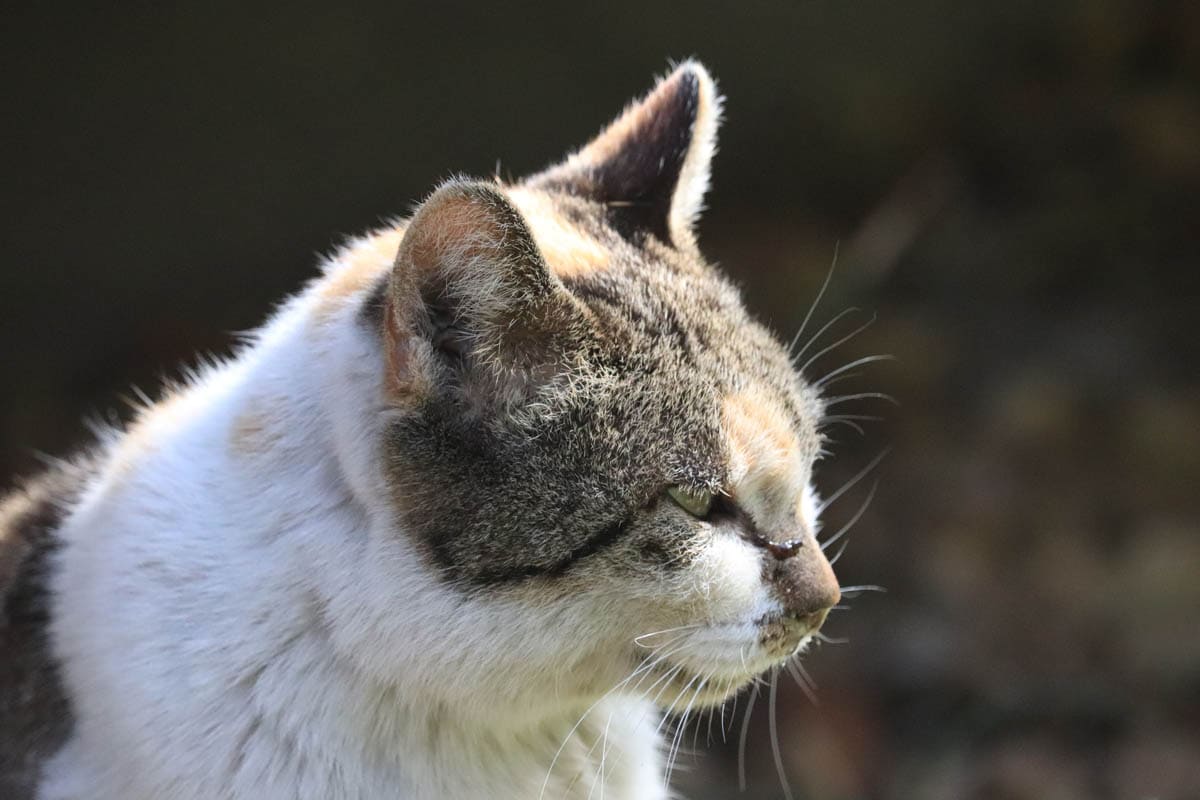About
As veterinary care continues to improve, the lifespan of cats increases. Just like humans, age-related disorders will develop in cats as they move into their senior years including feline dementia (known as cognitive dysfunction syndrome). This condition is characterised by a loss of awareness, confusion, and decreased responsiveness and is similar to Alzheimer’s disease and dementia in humans.
What age does cognitive dysfunction develop?
A cat is classed as a senior from around ten years of age. One study found that close to 30% of cats between 11 and 14 show signs of CDS, this figure jumps up to 50% in cats over 15 years of age and up to 80% in cats aged 16 and onwards.
Causes
The cause of CDS still isn’t known. In humans, it is believed to be caused by plaques forming on the brain or reduced or blocked blood flow to the brain due to damaged blood vessels and chronic free radical damage.
Symptoms
The acronym DISHAAL is used to summarise classic signs of CDS in cats.
- Disorientation
- Interactions (changes in interactions with owners, other pets and the environment)
- Sleep-wake cycle disturbances
- Housesoiling
- Activity (changes in/repetitive)
- Anxiety
- Learning
Disorientation:
Can manifest as confusion and wailing for no apparent reason. Wandering aimlessly, forgetting where their food bowls or litter trays are, staring into space, getting lost in the neighbourhood. Some pet owners report that their cat no longer recognised familiar faces.
Interactions:
Withdrawing from routine activities such as spending more time sleeping alone, loss of interest in usual activities such as sitting outside, following a human around the house, no longer greeting you at the door when you return. One friend says that her shy and somewhat grumpy cat has become friendly and outgoing.
Sleep-wake cycle disturbances:
A cat who ordinarily would sleep during the night may spend more time awake (often crying), increased daytime sleep.
Housesoiling:
Going to the toilet in places other than the litter tray can occur. This may be due to CDS (forgetting where the litter tray is), but physical conditions can also cause him to go elsewhere. Any changes in litter tray habits should be seen by a veterinarian to rule out a urinary tract disorder such as cystitis, urinary tract infection, urinary blockage. Incontinence is also quite common for senior cats. Increase the number of litter trays in your house, if you live in a multi-story home, make sure you have litter trays on all levels. Avoid high sided trays with older cats as it can be difficult for them to get in and out of.
Activity:
Changes in activity, sleeping more, grooming less, pacing, licking household objects.
Anxiety:
Vocalisation, fear of sounds, visual stimuli, places and people. Separation anxiety when a family member or pet isn’t close.
Learning:
Decreased ability to perform tricks or respond to familiar commands.
Diagnosis
The veterinarian will want to perform a physical examination and obtain a medical history from you. During the examination, the veterinarian will weigh the cat and assess the body condition, look into the retina at the back of the eye, and check the cat’s blood pressure and perform a neurological examination.
Differentials:
Many diseases can lead to changes in behaviour, which include:
- Electrolyte derangements (hypoglycemia, hypocalcemia)
- Brain lesions
- Hyperadrenocorticism
- Hypoadrenocorticism
- Hepatic encephalopathy
- Hyperthyroidism
- Diabetes
- Insulinoma
- Pain
- Peripheral neuropathy
- Urinary tract infections
- FLUTD
- Psychogenic alopecia
- Certain drugs
Diagnostic workup:
Baseline tests which include biochemical profile, complete blood count, and urinalysis can provide a picture of the overall health of the cat.
Additional tests can include x-ray or ultrasound to look for tumours (especially of the brain) and check for arthritis (which may make grooming and stepping in/out of the litter tray difficult).
Treatment
There is no cure for CDS at present, but it may be possible to slow down clinical signs and improve quality of life.
Drug therapy:
Selegiline is a selective and irreversible inhibitor of monoamine oxidase B (MAO) and may enhance dopamine in the cortex and hippocampus. It may require 2-6 weeks of administration before clinical improvement. Selegiline is not licensed for the treatment of CDS in cats; however, it may be prescribed as an extra-label medication.
Anti-anxiety medications:
Cats who exhibit signs of anxiety can benefit from the tricyclic antidepressants (TCA) Clomipramine (Anafranil) which it is thought to increase the activity of the neurotransmitter serotonin, which contributes to mood regulation and feelings of well-being and happiness. Fluoxetine is a Selective Serotonin Reuptake Inhibitor (SSRI) that works by preventing the brain from reabsorbing serotonin. In this way, fluoxetine helps the brain to maintain enough serotonin so that you the cat has a feeling of well-being, due to improved communication between brain cells.
Dietary:
Diets that contain antioxidants, b-carotene, vitamin E and omega-3 fatty acids may slow down the progression of CDS in cats. a-lipoic acid and l-carnitine can enhance mitochondrial function. Hill’s Prescription Diet Feline j/d, is a diet for cats with osteoarthritis and contains antioxidants and essential fatty acids. S-adenosylmethionine supplements may help brain function.
Environmental enrichment:
Increase the amount of time you spend with the cat. Keep a routine, feed at the same time and don’t move things around. Increase mental stimulation with extra toys which can include puzzle feeders and interactive toys which can increase nerve growth factors and increase cognitive function.
Don’t punish the cat for litter box accidents:
Clean it up, seek medical attention (to rule out medical causes), and increase the number of trays you have in the house. If the cat is having problems remembering where the tray is, maybe consider reducing the amount of space the cat has access to.

